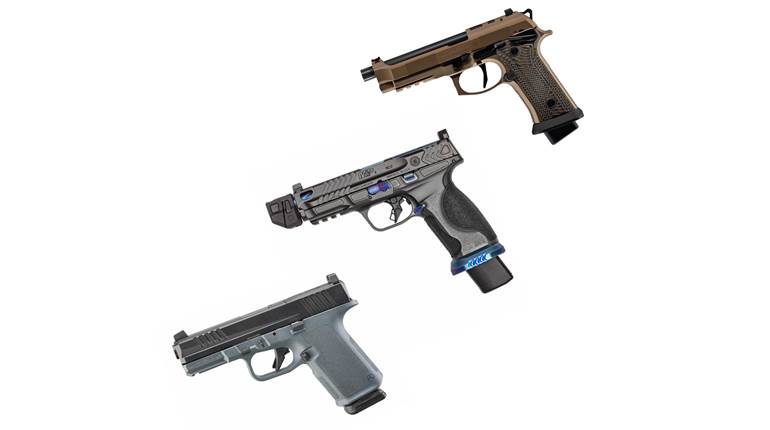
With a 230-gr., 0.451”-diameter bullet propelled to approximately 850 f.p.s., the .45 Auto’s capability of stopping deadly threats is undeniable. One could infer, then, that a lighter projectile of identical diameter that attains a significantly higher velocity would be equally, if not more, effective, as well as exhibit less felt recoil, too. Such was the logic behind Federal Premium’s Personal Defense Low Recoil .45 Auto ammunition. In this load, the company employs a 165-gr. Hydra-Shok jacketed hollow-point bullet (JHP) propelled to 1060 f.p.s., which results in 412 ft.-lbs. of energy at the muzzle. The aforementioned 230-gr. load would have 369 ft.-lbs. As for the Hydra-Shok JHP, it is a non-bonded projectile in which the scored, gilding metal jacket, working in concert with the lead core with a center post, ensures reliable, consistent penetration; hence the reason that it has been a mainstay in the Federal line since its introduction in 1988. High retained weights, wide upset diameters, and deep penetration (even through FBI-prescribed barriers) are also hallmarks of the Hydra-Shok bullet. The ammunition also uses nickel-plated cases, which are less prone to corrosion, offer smoother feeding, and aid visual confirmation of a loaded chamber during a press check.
At the range, I compared Personal Defense Low Recoil to two other .45 Auto loads-Champion 230-gr. FMJ RN (830 f.p.s.) and Home Defense 165-gr. Guard Dog (1140 f.p.s.)-in a Springfield Armory XD-S 3.3 to determine if there was, perceptually, a difference in recoil. As a baseline, I first fired 20 of the 230-gr. load, and then moved to the 165-gr. Home Defense. Shooting the former quickly loses its appeal in the minimalist-approach semi-automatic defensive pistol. As expected, Home Defense was more pleasant to shoot. After a couple magazines worth of Home Defense were sent downrange, I switched to Personal Defense Low Recoil load. The reduction in recoil was noteworthy; however, keep in mind that you’re still firing a .45 Auto-chambered compact handgun, so don’t expect gentleness. To confirm my initial impressions, I then changed back and forth between the 165-gr. loads, and even loaded magazines with a combination of the two. In all cases, the reduction in recoil offered by the like-named load was discernible. But, with the diminution of felt recoil came an inverse in muzzle flash; there was a noticeable increase that is, undoubtedly, attributable to the volume and burn rate of the propellant used-especially in the XDs’ abbreviated barrel.
Concerning accuracy, shooting offhand at 7 yds. the Personal Defense and heavier Champion load both shot five-shot groups ranging between 1” and 1¾” from center to center. From sandbags, I would expect them to tighten considerably. The Home Defense round expanded on those measurements slightly, but all were sufficiently accurate for their intended use.
When you demand .45 Auto terminal performance but are adverse to recoil, or own one of the myriad “pocket” pistols chambered for the cartridge, Federal Premium’s Personal Defense Low Recoil .45 Auto deserves consideration. Cheaper Than Dirt! lists twenty-count boxes for $22.50.






































